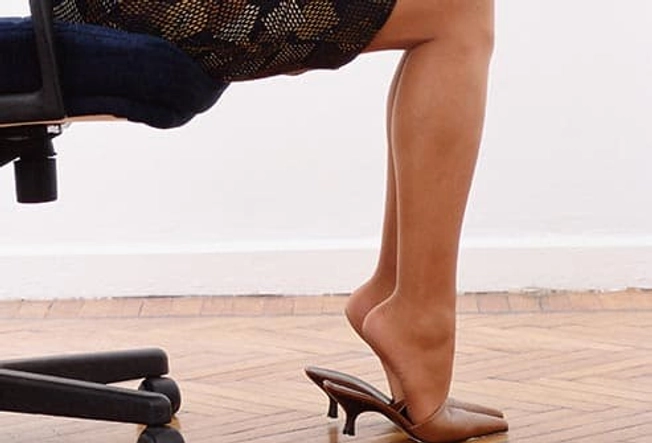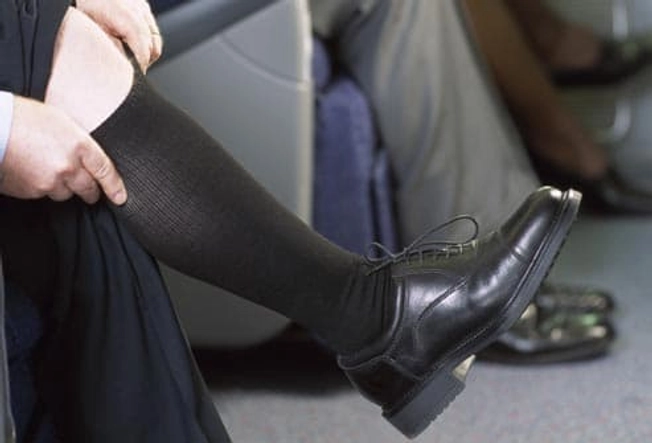Tips for Living With DVT


Stay Alert in the Air
On a long flight, skip the alcohol and sleeping pills. You need to stay awake enough to keep your muscles moving for good blood circulation. Get up and walk around every hour or two. When you're sitting, change your position often. Don't cross your legs, since that can weaken blood flow.

Prep for Travel
Wear light, loose-fitting, comfortable clothing. Avoid anything that could restrict your circulation. Drink lots of water, too. Ask your doctor if you need to take any extra medication -- or a different medication -- during your trip.

Desk-ercise: Foot Pumps
Whenever you're stuck in your seat, try to regularly move your feet and calf muscles. For example: Put your feet flat on the floor. Raise your toes in the air while keeping your heels on the ground. Hold for 3 seconds. Then reverse -- plant your toes, raise your heels, and hold for 3 seconds.

Take Your Ankles for a Spin
Another easy exercise to do when you're sitting, perhaps in a waiting room or at the movies? Lift your foot off the floor and make circles in the air with your toes. Go for 15 seconds in one direction, then reverse. Do the same thing with the other foot. Or do both feet at the same time!

Schedule Breaks
Don't spend the day at your desk. Set the reminder on your computer or phone for 1 to 2 hours. When it goes off, get up and walk for a few minutes. Then reset the alarm. You can use the timer to remind you to stretch your legs and feet, and move them around while you sit, too.

Try Compression Stockings
Your doctor may recommend these to help prevent clots. The stockings put gentle pressure on your feet and legs to improve blood flow.
If you don't like a particular pair, don't give up. Talk to your doctor first. A different brand may help. Make sure you have the right size and the right amount of pressure. Compression socks might be more comfortable for you, so ask if that's an option.

Get Moving
Regular physical activity is a great way to avoid getting another deep-vein clot. It gets your blood moving and prevents swelling. And exercise can help you stay at a healthy weight, which also lowers your risk. Working out can improve your lung function too, which is key if you've had a pulmonary embolism.
Check with your doctor before you go gung-ho on a new routine. Lots of people start slowly with gentle exercises like walking and swimming.

Stop Smoking
If you light up, now's the time to quit. Smoking restricts your blood flow and makes clots more likely. Talk to your doctor about ways to make quitting easier, like nicotine gum or patches, or prescription medicine.
Seize the moment: Use your DVT as a wake-up call and an opportunity to make lasting changes to your lifestyle.

Be Wary of Bleeding
Blood thinner medicines can be essential after a DVT, but they can also make nicks and cuts bleed more. Instead of shaving with a blade, switch to an electric razor. Be careful when using nail clippers, scissors, knives, and sharp tools. Also, use a soft-bristled toothbrush and waxed floss, because they're less likely to injure your mouth. Ask your doctor about what else you should -- and shouldn't -- do.

Relax
Life after DVT can be stressful. Try not to worry about having another blood clot. Many people who get deep vein thrombosis don't get it again, especially if they follow their treatment plan. Your risk goes down over time, too. The longer you stay healthy, the lower your chances of having another one are.
Use mindfulness, deep breathing, or other forms of meditation to help you ease your mind. Download an audiobook on your phone or tablet to learn new techniques.